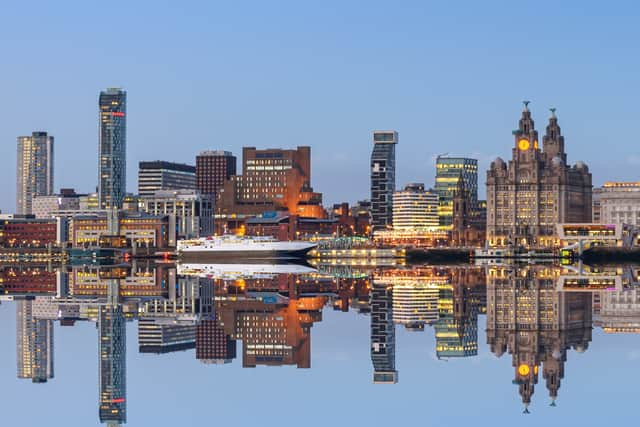‘World famous’ Liverpool skyline to be protected through new tall buildings policy
and live on Freeview channel 276
Liverpool’s world famous skyline could be protected by a new policy on the design and location of new tall buildings in the city.
In 2021, Liverpool lost its World Heritage status following the development of the waterfront, which UNESCO said led to the “irreversible loss” of the historic value of the docks.
Advertisement
Hide AdAdvertisement
Hide AdThe city had enjoyed World Heritage status since 2004, but the United Nation’s heritage body said the Liverpool Waters project to develop the docks and waterfront had destroyed its value.
Other issues were the “three disgraces” which were built right next to the historic Three Graces - consisting of the Royal Liver Building, The Cunard Building and the Port of Liverpool Building - back in 2013, with many locals believing the new waterfront buildings to be the city’s biggest eyesores.
Now, Liverpool Council is recommending the adoption of a Tall Buildings Supplementary Planning Document (SPD) which could be used to shape development across the city. The council’s Cabinet will discuss the policy next Tuesday (October 17).


The local authority says guidance within the SPD will ensure that “all tall building proposals make a positive contribution to Liverpool’s skyline, distinctiveness and image, the city’s growth and the delivery of high quality and sustainable places.”
Advertisement
Hide AdAdvertisement
Hide AdAdoption of the document, which has been informed by “significant public engagement”, would be used in the decision-making process for all future planning applications for proposed tall buildings.
What does the policy say?
The new guidance sets out in detail what the council considers to be appropriate in terms of height, design and location and will help guide the council’s new waterfront strategy. As well as providing design guidance that complements the National Design Guide, the policy ensures that future tall buildings will also protect the city’s historic character, heritage assets and city’s unique and world renowned image.
The council has identified five areas in and around the city centre where “clusters of taller buildings could be appropriate.” They are: Liverpool Waters, Commercial District, Leeds Street/Pall Mall, Paddington Village and the southern fringe of the Baltic Triangle. Guidelines for appropriate heights for new planning applications in these clusters will also be provided.
What has been said?
Councillor Nick Small, Cabinet Member for Economy and Development, said: “Liverpool’s skyline is world famous and its development needs to be sensitively handled. We need to ensure its historic character and charm are maintained, whilst allowing for economic growth and job creation.
Advertisement
Hide AdAdvertisement
Hide Ad“This a very timely document as it will help guide and shape our new waterfront strategy and set a clear path as to how developments can provide growth for the future, without impacting on climate change and net-zero ambitions.
“Maintaining that balance between environment and regeneration runs throughout the heart of this policy and it has set out clear principles around design, quality and sustainability and what the city expects from developers to meet those standards.
“We want to ensure our next generation of tall buildings will have a long-term purpose and can instil pride when we look up at them – both for how they look – and what they offer.
“The Spine in Paddington Village is a prime example and shows we can deliver world-class buildings fit for the 21st century and I’m confident the city can curate and foster many more in the years ahead.”
Comment Guidelines
National World encourages reader discussion on our stories. User feedback, insights and back-and-forth exchanges add a rich layer of context to reporting. Please review our Community Guidelines before commenting.
